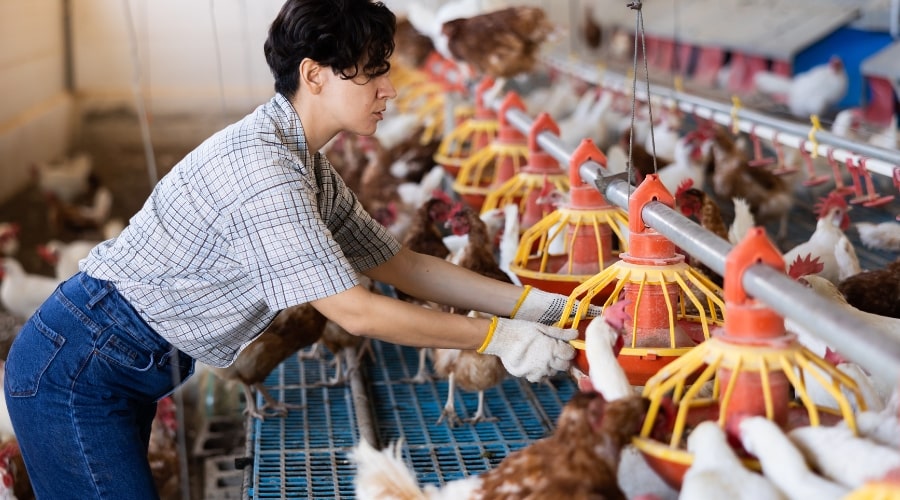Choosing the right location for your poultry farm is critical. The location impacts housing setup, equipment needs, and overall productivity. By carefully considering these factors, you can create an efficient and successful operation.
Evaluate Accessibility and Infrastructure
A poultry farm should be easy to access. Choose a location close to major roads for transporting supplies and products. Proximity to markets or distribution centers reduces transportation costs and helps maintain product freshness.
Check the availability of utilities like electricity and water. A reliable water supply is essential for drinking, cleaning, and cooling systems. If the area lacks consistent power, consider investing in backup generators or solar power systems [TO BE VERIFIED].
Assess Space Requirements
Plan for adequate space to accommodate housing, equipment, and future expansion. The location should support the type of poultry system you’re using. For example, free-range systems need larger open areas, while intensive systems require compact but well-ventilated buildings.
Ensure the land has good drainage to prevent waterlogging during rainy seasons. Poor drainage can lead to health problems in your flock. Additionally, confirm that the soil and environment meet local regulatory standards.
Focus on Proper Housing Setup
Design housing that provides comfort and safety for your poultry. The structure should protect birds from extreme weather, predators, and pests. Materials should be durable and easy to clean.
Ventilation is a key factor. Install windows, vents, or fans to maintain airflow and control temperature. Avoid overcrowding, as it increases stress and disease risks. The recommended space per bird varies depending on the breed and farming system [TO BE VERIFIED].
Lighting is another crucial aspect. Use natural light during the day and artificial lights to extend productivity during shorter days. Adjustable light intensity ensures proper growth and egg-laying patterns.
Select Appropriate Equipment
Equip your farm with the right tools for feeding, watering, and waste management. Automated feeders and drinkers save time and reduce labor costs. Choose models that are easy to maintain and suited for the number of birds.
Include perches, nesting boxes, and dust baths if you’re rearing layers. These items improve bird comfort and production. For broilers, focus on feeders and drinkers designed to support fast growth.
Waste management systems should handle manure efficiently to prevent odors and contamination. Composting or biogas production can turn waste into a useful byproduct.
Prioritize Biosecurity Measures
The location should support strict biosecurity protocols. Limit access to the farm to minimize disease risks. Build fences and gates to control entry.
Establish a designated area for visitors to sanitize footwear and equipment. Separate quarantine spaces for new or sick birds prevent infections from spreading to the main flock. Regularly disinfect housing, equipment, and surrounding areas.
Consider Environmental Factors
The environment should promote healthy living conditions for your poultry. Avoid areas prone to flooding or extreme weather conditions. High altitudes or areas with consistent strong winds may require additional structural reinforcements.
Stay aware of noise and odor levels. Farms close to residential areas may face complaints. Maintaining proper waste disposal systems helps manage odor effectively.
Checklist for Choosing the Right Location
- Proximity to markets and suppliers
- Reliable access to utilities like water and electricity
- Adequate space for housing and future expansion
- Proper drainage and soil quality
- Secure boundaries to support biosecurity
- Climate suitability for the chosen poultry breeds
- Compliance with local regulations
Testing and Planning
Before finalizing a location, test the site for suitability. Conduct soil tests to check for contaminants or fertility issues. Verify the availability of water and assess its quality. Consult with local farmers or experts for additional insights.
Create a layout plan for your farm, detailing housing placement, equipment areas, and waste management zones. Planning ahead reduces the chances of costly adjustments later.
By focusing on housing and equipment setup when choosing your location, you lay the foundation for a thriving poultry farm. Take the time to evaluate your options thoroughly to ensure long-term success.


